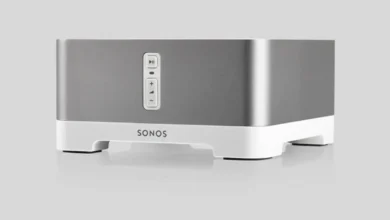Illuminating the World: A Comprehensive Guide to Lux Pascal

Introduction to Lux Pascal
In the realm of lighting technology, Lux Pascal stands as a beacon of innovation, offering a blend of efficiency, longevity, and versatility that has revolutionized the way we illuminate our surroundings. But what exactly is Lux Pascal? At its core, Lux Pascal harnesses the power of Light Emitting Diodes (LEDs) to produce bright, energy-efficient light across a wide spectrum of applications. Its origins trace back to the pioneering work of scientists and engineers who sought to create a lighting solution that could surpass the limitations of traditional incandescent and fluorescent bulbs.
Understanding Light Emitting Diodes (LEDs)
To comprehend the essence of Lux Pascal, one must first grasp the fundamentals of LED technology. Unlike conventional light sources that rely on the heating of a filament or gas to produce light, LEDs operate by passing an electrical current through a semiconductor material, stimulating the emission of photons. This process generates minimal heat, resulting in significantly higher energy efficiency and a longer lifespan compared to traditional lighting systems. Lux Pascal takes full advantage of these characteristics, utilizing LEDs as its primary light source to deliver unparalleled performance and reliability.
Components of Lux Pascal Systems
At the heart of every Lux Pascal installation lies a meticulously engineered ensemble of components designed to optimize light output, efficiency, and longevity. LED chips serve as the fundamental building blocks, converting electrical energy into radiant light with remarkable precision. Surrounding these chips are optical lenses and reflectors, which help to shape and direct the emitted light according to the desired application. Heat sinks and thermal management systems ensure that the LEDs operate within their optimal temperature range, maximizing both performance and lifespan. Additionally, sophisticated control circuitry and drivers enable precise adjustment of brightness, color temperature, and other parameters, allowing for customizable lighting solutions tailored to specific needs.
The Science Behind Lux Pascal
Delving deeper into the science behind Lux Pascal reveals a captivating realm where physics and engineering converge to create a symphony of light. At its core, Lux Pascal embodies the principles of light emission and color rendering, leveraging advancements in semiconductor technology to achieve unparalleled levels of efficiency and accuracy. Key metrics such as luminous efficacy, color rendering index (CRI), and correlated color temperature (CCT) provide objective measures of performance, guiding the development and refinement of Lux Pascal systems. Spectrum analysis further elucidates the complex interplay of wavelengths that comprise the emitted light, offering insights into its quality, consistency, and suitability for various applications.
Applications of Lux Pascal
The versatility of Lux Pascal knows no bounds, as evidenced by its diverse array of applications spanning multiple industries and environments. In the realm of architectural lighting, Lux Pascal illuminates skylines, facades, and landmarks with breathtaking precision, transforming urban landscapes into vibrant works of art. Automotive manufacturers harness its power to enhance safety and aesthetics, incorporating Lux Pascal headlights, taillights, and interior lighting systems into their vehicles. Indoor and outdoor spaces alike benefit from the brilliance of Lux Pascal, whether in offices, retail establishments, public parks, or residential settings. Moreover, the entertainment industry relies on Lux Pascal for stage lighting, film production, and immersive experiences that captivate audiences worldwide.
Advantages of Lux Pascal Technology
The adoption of Lux Pascal technology offers a multitude of benefits that extend far beyond mere illumination. At its core, Lux Pascal is synonymous with energy efficiency, boasting significantly lower power consumption and operating costs compared to traditional lighting sources. This translates into substantial savings for businesses, municipalities, and consumers alike, while also reducing carbon emissions and environmental impact. Furthermore, Lux Pascal’s longevity and durability ensure reliable performance and minimal maintenance requirements, further enhancing its appeal as a sustainable lighting solution. Its inherent versatility and controllability enable dynamic lighting designs that enhance comfort, productivity, and aesthetics in any setting, from commercial spaces to residential dwellings.
Design Considerations for Lux Pascal Installations
Achieving optimal results with Lux Pascal requires careful consideration of various design factors, ranging from fixture placement to customization options. Proper spacing and orientation of fixtures are essential to ensure uniform light distribution and minimize glare, particularly in indoor environments where visual comfort is paramount. Customization options such as adjustable color temperature, dimming capabilities, and programmable lighting scenes empower users to tailor the lighting experience to their specific needs and preferences. Integration with smart lighting systems further enhances versatility and convenience, allowing for remote control, scheduling, and automation of lighting functions. Whether illuminating a workspace, retail environment, or outdoor landscape, thoughtful design ensures that Lux Pascal delivers maximum impact with minimal energy consumption.
Case Studies: Real-World Implementations
To fully appreciate the transformative power of Lux Pascal, one need look no further than real-world implementations that have reshaped the fabric of our built environment. Urban lighting projects around the globe showcase the potential of Lux Pascal to enhance safety, security, and aesthetics in public spaces. From iconic landmarks to bustling thoroughfares, cities have embraced Lux Pascal as a catalyst for economic development and cultural enrichment. Stadiums and arenas have likewise undergone dramatic transformations, with Lux Pascal lighting systems elevating the spectator experience while reducing operational costs and environmental footprint. Commercial and industrial facilities reap the benefits of Lux Pascal’s efficiency and reliability, enjoying enhanced productivity, safety, and operational efficiency. Even residential spaces have embraced Lux Pascal, with homeowners appreciating its ability to create inviting, energy-efficient environments that enhance comfort and well-being.
Challenges and Limitations of Lux Pascal
Despite its myriad advantages, Lux Pascal is not without its challenges and limitations. Chief among these is the initial cost of implementation, which can be prohibitive for some users, particularly in large-scale applications. While the long-term savings in energy and maintenance costs typically offset this initial investment, upfront capital expenditure remains a barrier for many potential adopters. Additionally, the thermal management of Lux Pascal systems poses challenges, as excessive heat can degrade performance and shorten lifespan if not properly addressed. Compatibility with existing infrastructure and control systems may also present hurdles, requiring retrofitting or integration efforts to ensure seamless operation. Nonetheless, ongoing advancements in technology and increasing market adoption are steadily mitigating these challenges, paving the way for broader acceptance and integration of Lux Pascal lighting solutions.
Innovations in Lux Pascal Technology
As technology evolves at a rapid pace, so too does Lux Pascal, with ongoing innovations driving continuous improvements in performance, efficiency, and versatility. Advances in LED efficiency and brightness have enabled Lux Pascal to achieve new levels of luminous efficacy, further enhancing its appeal as a sustainable lighting solution. Integration with Internet of Things (IoT) platforms and wireless communication protocols opens up exciting possibilities for smart lighting applications, enabling seamless integration with other building systems and offering unprecedented levels of control and automation. Emerging trends in spectral tuning and customization empower users to fine-tune their lighting environments with precision, creating dynamic scenes that enhance comfort, productivity, and well-being. With each new breakthrough, Lux Pascal reinforces its position as a frontrunner in the ever-evolving landscape of lighting technology.
Future Prospects of Lux Pascal
Looking ahead, the future of Lux Pascal appears brighter than ever, with boundless opportunities for innovation, growth, and impact. As concerns about energy consumption, environmental sustainability, and human well-being continue to rise, Lux Pascal stands poised to address these challenges head-on, offering a compelling solution that balances performance with responsibility. Potential advancements in LED technology, materials science, and manufacturing processes hold the promise of even greater efficiency, reliability, and affordability, further expanding the reach of Lux Pascal into new markets and applications. Integration with renewable energy sources such as solar and wind power offers the prospect of truly sustainable
You read also more
Omni


